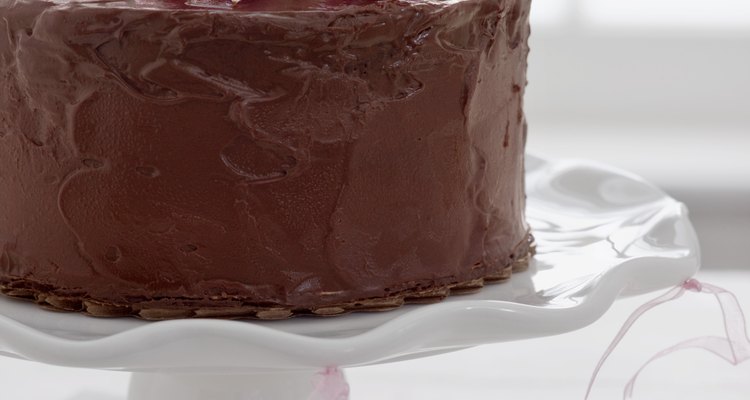
Creatas Images/Creatas/Getty Images
Baking a cake can be as simple as opening a boxed mix and adding eggs and oil, or as complicated as separating eggs and weighing dry ingredients down to the gram to ensure the proper chemical reactions. Whichever way you choose, there are some basic procedures that you need to do in a specific order for the process to flow smoothly and the cake to turn out right. Once you have those basics down, you can keep it as simple, or get as complicated, as you prefer.
1. Prepare your cooking station and ingredients
Read the recipe before doing anything to make sure that you understand the steps. You also want to ensure that you have all of the ingredients and utensils you need.
2. Preheat your oven
Preheat your oven to the temperature specified by your recipe. This is important to ensure that your cake bakes at the proper temperature for the correct amount of time. Never start a cake in a cold oven because the slow build-up of heat can affect the way it rises.
3. Grease your Cake Pans
Grease your cake pans with butter or nonstick cooking spray. Coat the greased pans with either a light dusting of flour or, if you’re using a boxed mix, use a tiny bit of the dry mix. This helps keep the cake from sticking to the pan.
4. Measure your Dry Ingredients
Measure out your dry ingredients according to the recipe. Use measuring spoons rather than regular flatware to make sure that your amounts are correct.
5. Measure your Wet Ingredients and Mix
Measure your wet ingredients and mix them as instructed in your recipe.
6. Slowly add Wet Ingredients to Dry Ingredients
Add the wet ingredients to the dry ones. You typically do this slowly to ensure that they mix well.
If your recipe indicates that you need to add the wet ingredients in a certain order, do not deviate from it. Certain chemical reactions depend on certain ingredients combining at a specific point in the recipe.
7. Mix the Wet and Dry ingredients
Mix the wet and dry ingredients together using a wooden spoon, a whisk or an electric mixer. Some batters require gentle handling while others need to have air whipped into them, so use the tool indicated in your recipe.
8. Pour Mixed Batter into Cake Pans and Bake
Pour the batter into your greased and floured cake pans and set them on a rack in the center of the oven. Use a spatula to scrape the sides and bottom of the bowl to get all of the batter out.
9. Set a Timer
Set a timer for the time noted in the recipe or mix instructions. Do not open the door to check on the cake until the timer goes off.
10. Toothpick Test for Baked
Insert a toothpick into the thickest part of the cake. Most cakes are done when the toothpick has no batter on it when you pull it back out. This is not true for all cakes, so read and follow the instructions carefully.
11. Cool the Cake Prior to Decorating
Set the hot cake pans on racks so that air can circulate underneath them, helping them cool more quickly.
Related Articles
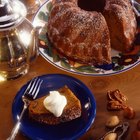
How to Convert a Pan Cake to a Bundt ...

How to Make Waffles With Cake Mix

What Causes Cupcakes to Be Dry?
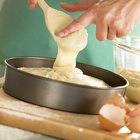
How to Make a Box Cake Mix Taste Better

How to Thicken Cake Batter
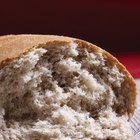
How to Bake With a Pressure Cooker
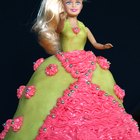
How to Make a Dome-Shaped Cake
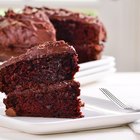
How to Bake a Really Moist Boxed Cake

How to Bake With Applesauce Instead of ...
How to Stop the Cherries Falling to the ...
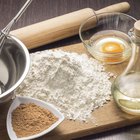
How to Stop Cakes From Dropping
Easy Strawberry Cake Recipe

How to Remove a Cake From the Pan

How Long Should I Cook a Cake If I Want ...

How Long Do You Have to Mix the Flour ...
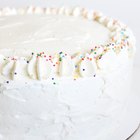
How to Make Cakes Like a Bakery
How to Make Banana Nut Cake Out of a ...

How to Make Pancakes Like a Pancake ...

How to Cook Cake in a Glass Dish
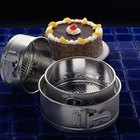
How to Keep Cake Edges From Hardening ...
Resources
Tips
- Set the hot cake pans on racks so that air can circulate underneath them, helping them cool more quickly.
Warnings
- Never start a cake in a cold oven because the slow build-up of heat can affect the way it rises.
Writer Bio
Brynne Chandler raised three children alone while travelling, remodeling old homes, taking classes at the Unioversity of California Northridge and enjoying a successful career writing TV Animation. Her passions include cooking, tinkering, decorating and muscle cars. Brynne has been writing fun and informative non-fiction articles for almost a decade. She is hard at work on her first cookbook, which combines healthy eating with science-based natural remedies.
Photo Credits
Creatas Images/Creatas/Getty Images